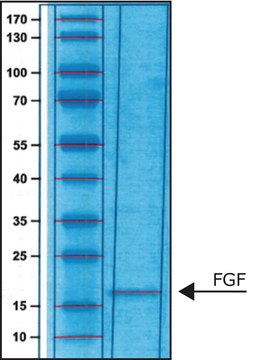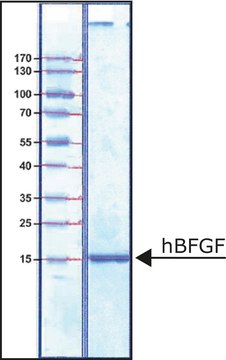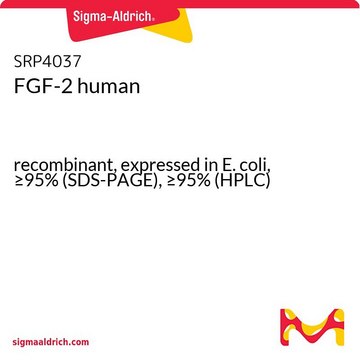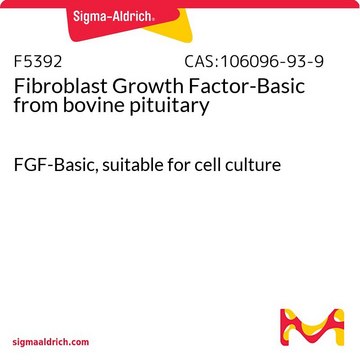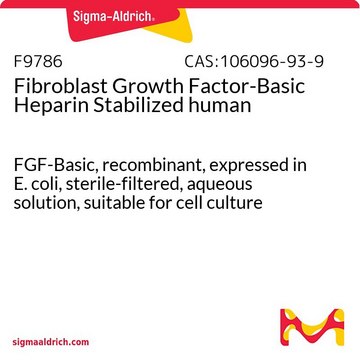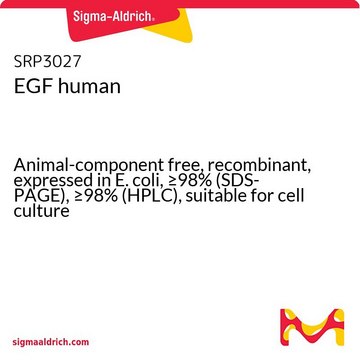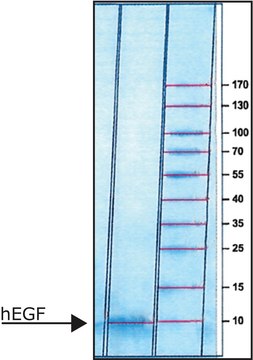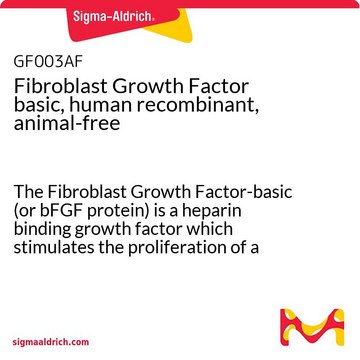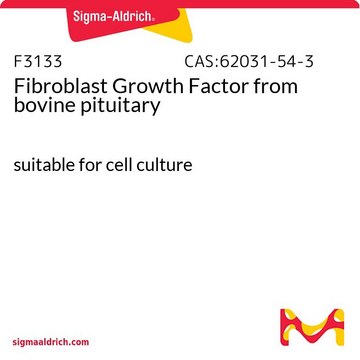F8424
Fibroblast Growth Factor-4 human
≥95% (SDS-PAGE and HPLC), recombinant, expressed in E. coli, lyophilized powder, suitable for cell culture
Synonym(s):
hFGF-4, FGF-4, K-FGF
About This Item
Recommended Products
Product Name
Fibroblast Growth Factor-4 human, FGF-4, recombinant, expressed in E. coli, lyophilized powder, suitable for cell culture
biological source
human
Quality Level
recombinant
expressed in E. coli
Assay
≥95% (SDS-PAGE and HPLC)
form
lyophilized powder
potency
≤10.0 ng/mL
quality
endotoxin tested
mol wt
19 kDa
packaging
pkg of 25 and 100 μg
storage condition
avoid repeated freeze/thaw cycles
technique(s)
cell culture | mammalian: suitable
impurities
<1 EU/μg
UniProt accession no.
storage temp.
−20°C
Gene Information
human ... FGF4(2249) , FGF4(2249)
Looking for similar products? Visit Product Comparison Guide
General description
Application
- To maintain trophectoderm stem cells.
- In neurogenic differentiation.
- In hepatocyte differentiation.
Biochem/physiol Actions
Physical form
Analysis Note
Storage Class Code
11 - Combustible Solids
WGK
WGK 3
Flash Point(F)
Not applicable
Flash Point(C)
Not applicable
Personal Protective Equipment
Regulatory Information
Choose from one of the most recent versions:
Certificates of Analysis (COA)
Don't see the Right Version?
If you require a particular version, you can look up a specific certificate by the Lot or Batch number.
Already Own This Product?
Find documentation for the products that you have recently purchased in the Document Library.
Articles
Fibroblast growth factors in cell culture and various growth factors for your research
Our team of scientists has experience in all areas of research including Life Science, Material Science, Chemical Synthesis, Chromatography, Analytical and many others.
Contact Technical Service
